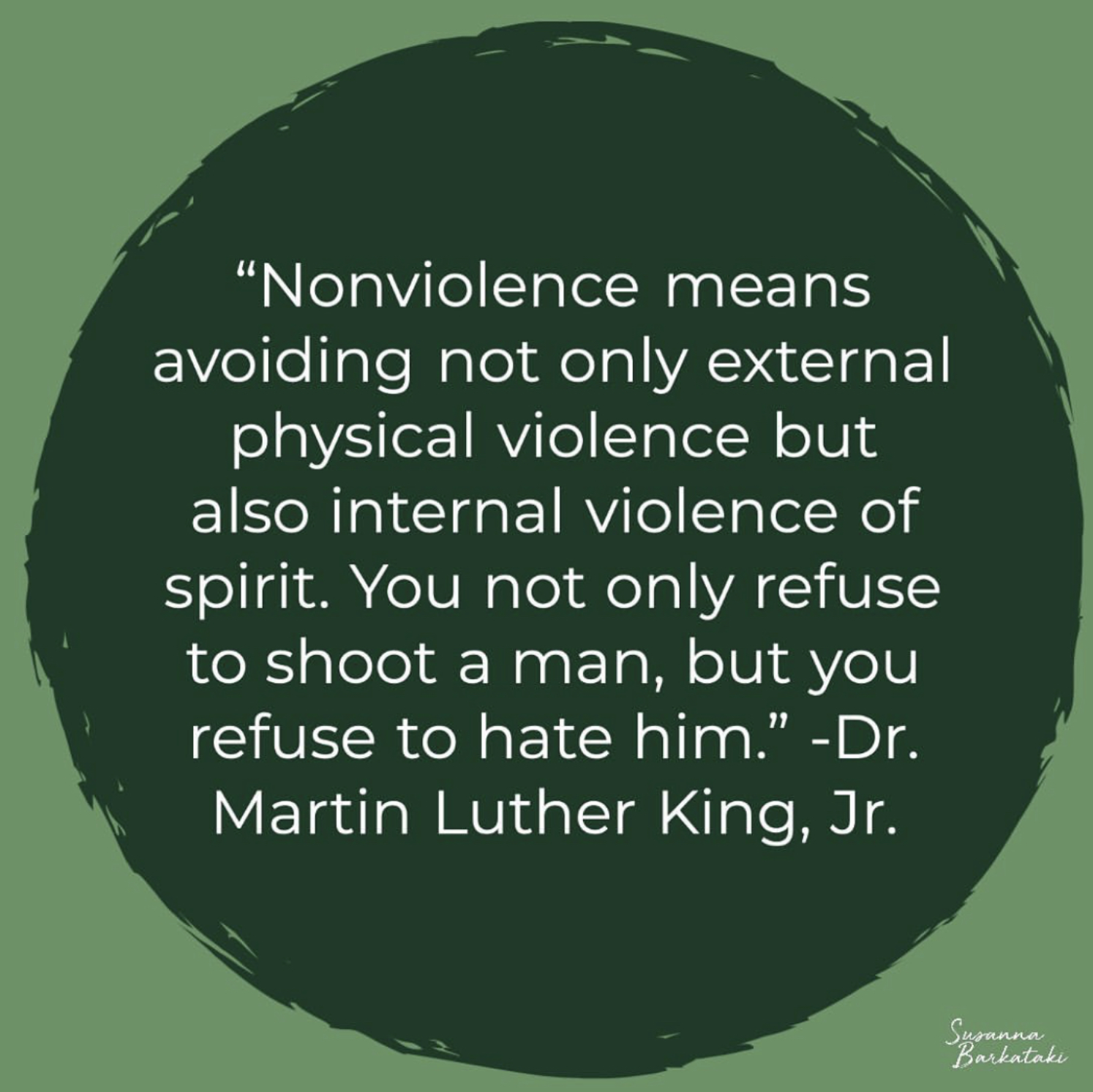Ahimsa in the Four Yogas
This blog post has been republished with permission of the author. To find the original post, click here.
This week we honor Martin Luther King, Jr., and the need for social and racial justice is still prevalent.
America has the opportunity to turn its gaze to the past, present, and future. With the gaze to the past, America can continually learn from the beautiful messages of Howard Thurman. Thurman not only inspired MLK but guided him through the Civil Rights Movement. In fact, Thurman's book Jesus and the Disinherited was in Martin Luther King, Jr.'s bag when he was assassinated.
Howard Thurman is one of the many impeccable social activists to have shed light on the Christian responsibility to the disinherited, a term he uses for marginalized populations. Through his encounter with Gandhi, he developed themes of compassion through his ministry and non-violence. This non-violent resistance was more focused on the internal struggle of African-Americans than the external. Thurman argued that non-violence would inevitably leave more space for the process of healing necessary for the disinherited to cope with the gaze to the past and hope for the gaze to the future.
Image curated by Susanna Barkataki
Gandhi, on the other hand, saw non-violence through the South Asian philosophy of ahimsa. Ahimsa, like many words that do not originate from a European language, possesses a variety of translations into English. Some translate ahimsa to mean “non-injury,” “non-killing,” or even “love.” In the article “With Our Negro Guests,” Mahadev Desai cites Gandhi as explaining his use of non-violence as “a term [he] had to coin in order to bring out the root meaning of Ahimsa” (335). By using the negation prefix and the negative term, Gandhi was calling for aggressive solidarity of direct action. Thurman and Gandhi agree that non-violence is not merely the absence of violence, but the call to just action.
Gandhi preached non-violence, or ahimsa, to Howard Thurman under this guise of the four yogas. Ahimsa is a yama in ashtanga yoga. In other words, non-violence is one of the social ethics tools described in the eight limbs of yoga. The philosophy of ashtanga was first written in the yoga sutras of Patanjali. Ashtanga has remained a predominant practice in regards to the four yogas, or disciplines. The four yogas are bhakti, jnana, karma, and raja. Bhakti is known as the yoga of devotion and is praised as the highest form of yoga in the Bhagavad Gita. Jnana yoga is the discipline of learning, knowledge, and wisdom. The discipline of karma is the yoga of right action. Raja yoga or “royal path” is the all-encompassing discipline that most directly relates to the comprehensive approach of ashtanga yoga.
Howard Thurman at Boston University.
From the Howard Thurman and Sue Bailey Thurman Collections, Howard Gotlieb Archival Research Center at Boston University.
In each form of yoga, ahimsa is present in distinct ways. Gandhi described these ways when responding to Howard Thurman’s question of “how are we to train individuals or communities in this difficult art?” (336). In Bhakti yoga, being devoted to the Divine inside of everyone is an expression of ahimsa. Gandhi alluded to this relationship when he was quoted saying, “seek ye first the kingdom of Heaven and everything else shall be added unto you. The Kingdom of Heaven is Ahimsa.” Ahimsa through the lens of Jnana yoga appears as learning the universality of people. In Christian terms, this means not only recognizing that all people are made in the image of God, but also acting based on the knowledge of oneness. Gandhi mentioned jnana yoga when saying one’s “living sermon” is “presuppose[d] by great study” (336). Informing ourselves and others of the racial injustices that took place during Thurman’s lifetime and that take place in today’s world is social action. Non-violence in karma yoga is the act of social action and social justice. Karma yoga implores people to participate in aggressive solidarity based on the understanding of ahimsa. Gandhi revered this as “tremendous perseverance.” Finally, ahimsa in raja yoga exists through living a moral life. Gandhi mentions raja yoga explicitly by saying the “royal road” is “living the creed in your life which must be a living sermon.” Gandhi used Howard Thurman’s question as an opportunity to introduce him to the four yogas of South Asia and further explain everyone's relationship to ahimsa.
Citations within the post are from “With Our Negro Guests,” in The Papers of Howard Washington Thurman, vol. 1.
Featured image by Unseen Histories via Unsplash.


